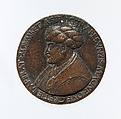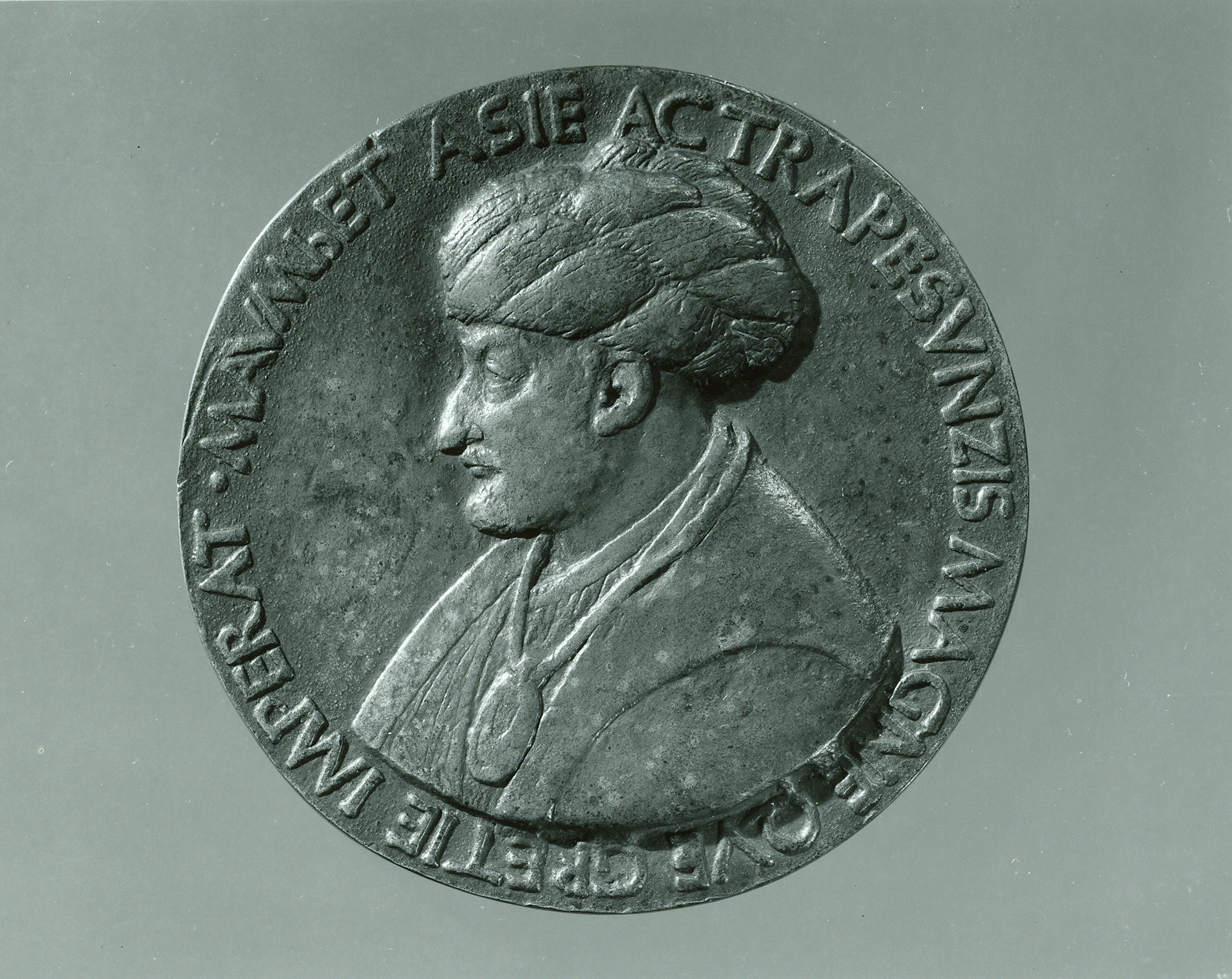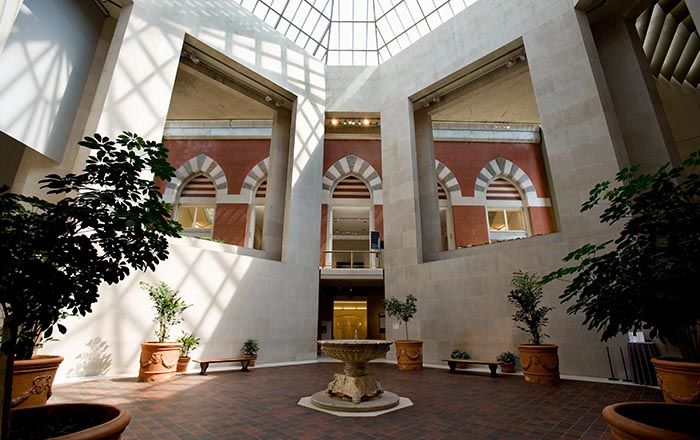Portrait medal of Sultan Mehmed II (obverse); a Triumphal Chariot (reverse)
Bertoldo di Giovanni Italian
Not on view
Bertoldo based this likeness on a medal by the Venetian artist Gentile Bellini, who had also painted the Ottoman sultan’s portrait. Mehmed favored Italian medalists, perceiving their art form as a way to emphasize his rightful lineage among the emperors of Byzantium and ancient Rome. This medal, Bertoldo’s largest and only signed example, was a gift from Lorenzo de’ Medici in flattering recognition of the sultan’s military victories.
On the reverse, a triumphant horse-drawn chariot is led by Mars, the god of war, carrying a trophy, an allusion to Mehmed’s planned territorial conquests. Standing on a pedestal, the sultan grasps a rope tied to three crowned female figures, representing his abduction of the territories under his rule: Asia, Greece, and Trebizond (an empire occupying the southern coast of the Black Sea). Mehmed associated himself not with the rulers of the Holy Roman Empire but with the entire line of emperors from ancient Rome and Byzantium.
Due to rights restrictions, this image cannot be enlarged, viewed at full screen, or downloaded.
This artwork is meant to be viewed from right to left. Scroll left to view more.






